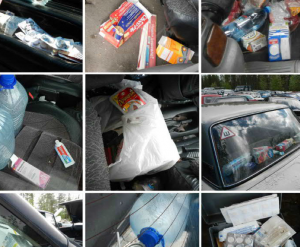Lapland’s Dark Heritage is active even during the summer holidays. Oula Seitsonen, Vesa-Pekka Herva and Mika Kunnari (University of Lapland) recently published a new research paper ‘Abandoned Refugee Vehicles “In the Middle of Nowhere”: Reflections on the Global Refugee Crisis from the Northern Margins of Europe‘ in a special issues of the Journal of Contemporary Archaeology. Their article discusses the heritage of recent refugee flow through Lapland’s northern border posts and the cars that were abandoned and confiscated at the border.
“Archaeology and heritage studies are, or should be, in a position to say something
meaningful about these broader issues entangled with refugees, and not least because
recent research in both fields has addressed themes that are more or less directly related
to refugee issues on the one hand, and materialities similar to the abandoned cars on
the other. For example, refugee issues represent a natural extension of the flourishing
interest in twentieth- to twenty-first-century conflicts, while the abandoned refugee
vehicles strike a resonance with themes such as “dark tourism” and ruins, or “ruin porn”.
The attraction to modern ruins and abandoned places and things, as exemplified by the
hobby known as “urban exploration”, is a mirror that reflects the significance of the very
materiality of the abandoned refugee vehicles. That is, the interest in urban exploration
and related practices would appear to denote a desire or need to encounter the world
and the past in an unmediated, “raw” form, “face to face”, and in one’s own terms. For
better or worse, the interpretation and understanding of the past and its material remains
have traditionally been dominated by experts who have told the public why this or that
thing surviving from the past is important, hence distancing non-experts from the valuation
of heritage. The same applies to refugee issues, which are governed by the state
in a faceless and bureaucratic manner, which in turn distances the public from the lived
experience and distress of the refugees. Direct encounters with the material realities
of the refugees, however, could be employed to spark personal, first-hand reflections
about, and connections with, refugee issues.”

